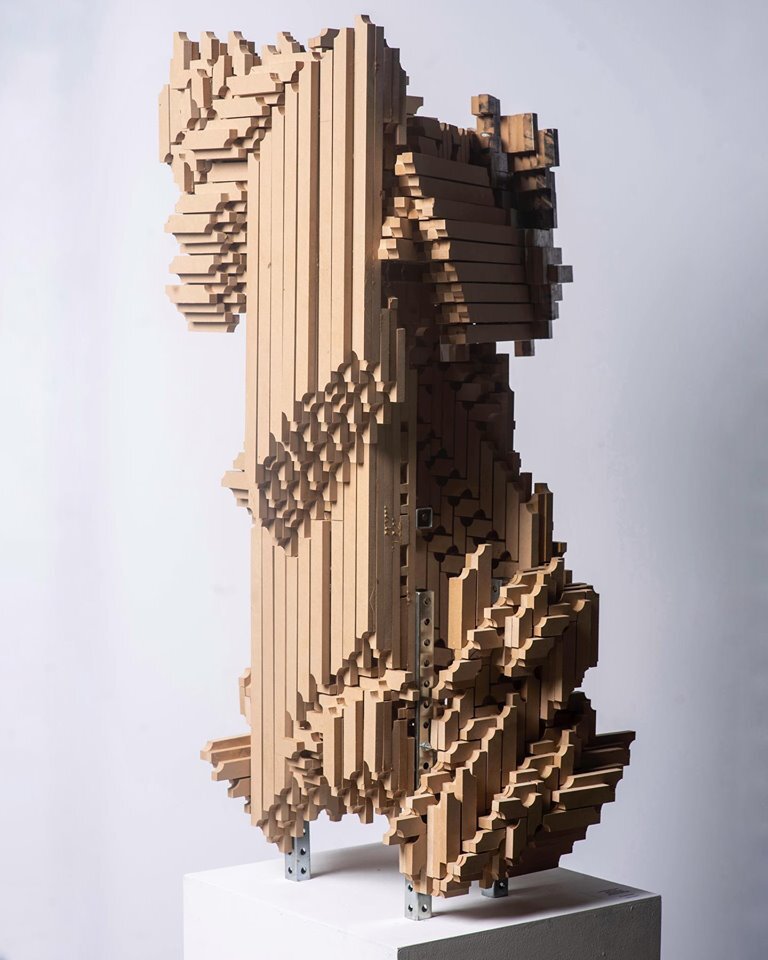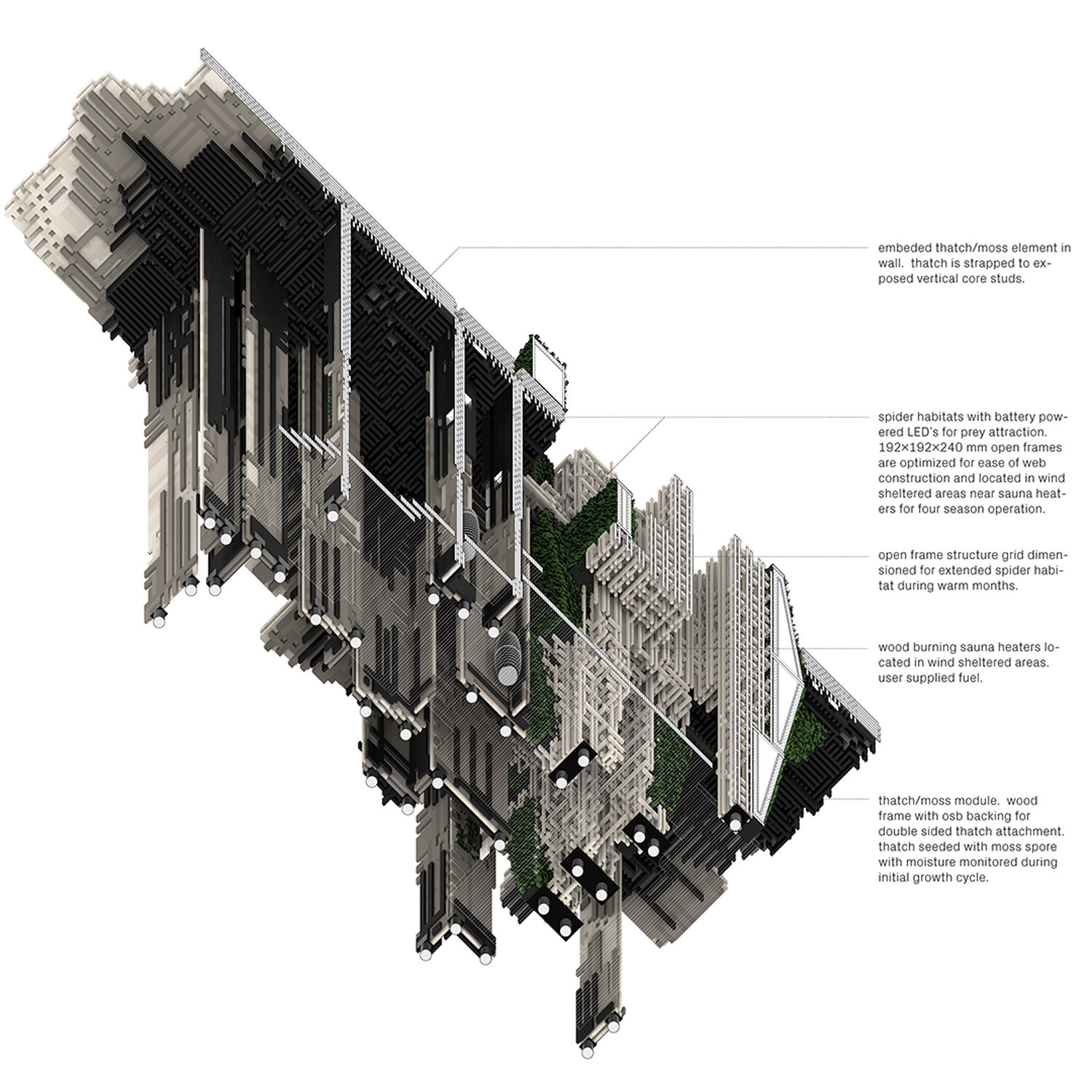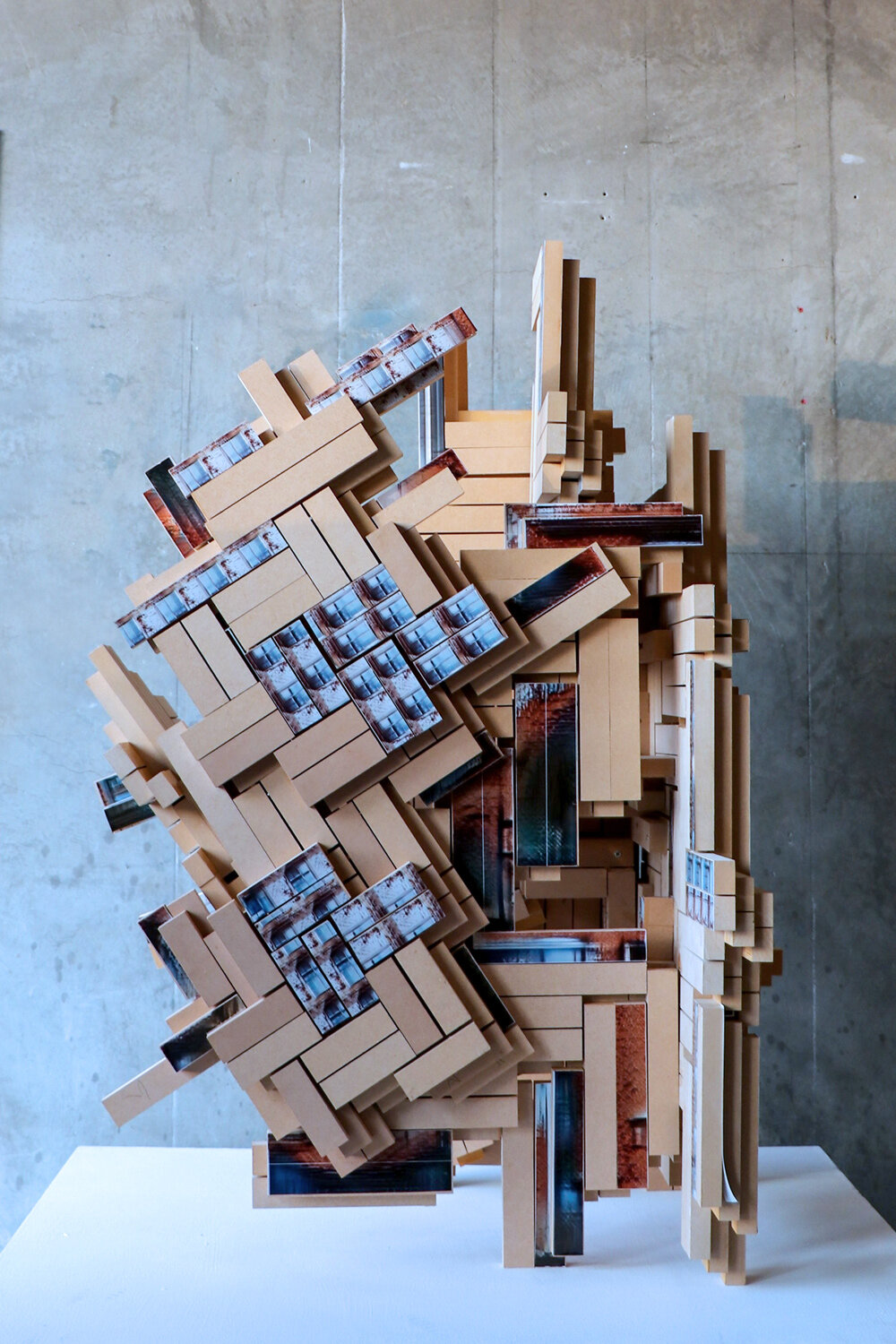Construction Innovation: AI and Robotic Fabrication
With its unprecedented use of robotics and AI, this project aims to increase the economic efficiency of creating highly customized CLT. At a time when homelessness is rampant and rising across the United States, by applying this technique in the construction of rapidly deployable housing, we will promote its application for a pressing public need.
The research explores how to use neural networks to rapidly generate layup schedules and robotic assembly instructions for panels. Preliminary research shows that the process can produce panels with apertures and space for services already embedded in them at extremely high levels of customization with no additional labor and with a dramatically lower proportion of waste in comparison to conventional generic CLT fabrication. By producing custom panels with built-in assembly details in the layup phase of production, this process will allow manufacturers to achieve efficiencies that are not possible with the conventional, manual CLT production process, which requires prohibitively expensive planning before fabrication. This is of particular significance when it comes to expanding applications for low-grade wood (#3) products and construction waste, because the AI can automatically strategize their use in the panels without structural compromise.
While there is a rapidly growing body of research that investigates the creation of custom layups in structural CLT panels, there is currently no university or industry facility in the United States investigating the use of machine learning to accelerate the fabrication of the custom panels. In addition to reducing manufacturing time and labor, this process also eliminates the need for expensive proprietary tooling required when CLT panels are utilized for novel structural forms. With its unique focus on increasing the efficiency of manufacturing custom CLT panels, this project has the potential to expand upon the entirety of the material research being done at other institutions.
The project’s goal is to increase speed and lower the costs of customized panel production, enhancing the economic efficiency of the construction of rapidly deployable, sustainable housing structures. Based on preliminary research, we anticipate that this work will demonstrate the ability to:
1. Produce structurally viable panels from lower grade timber with a 15% increase in material efficiency within 20% of stick frame costs in markets with a high labor cost.
2. Increase the percentage of #3 timbers in the lamination to 33% by utilizing lamination pattern to absorb structural weaknesses in individual timbers.



